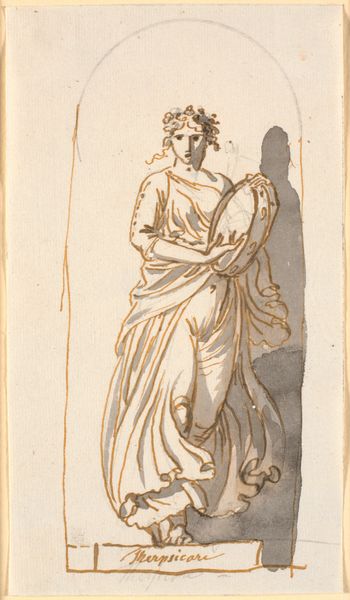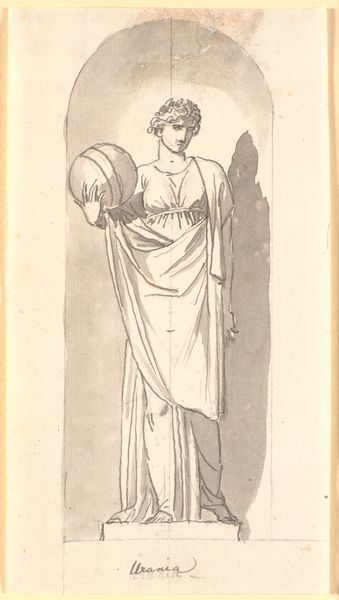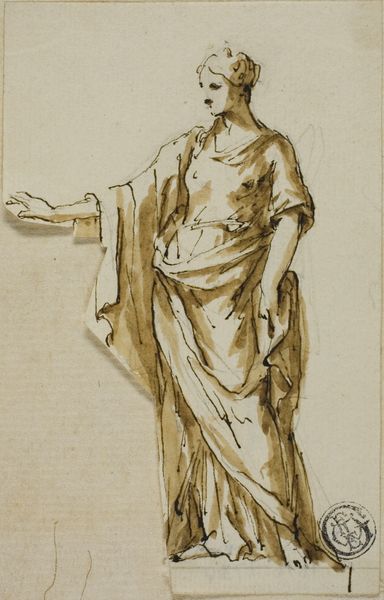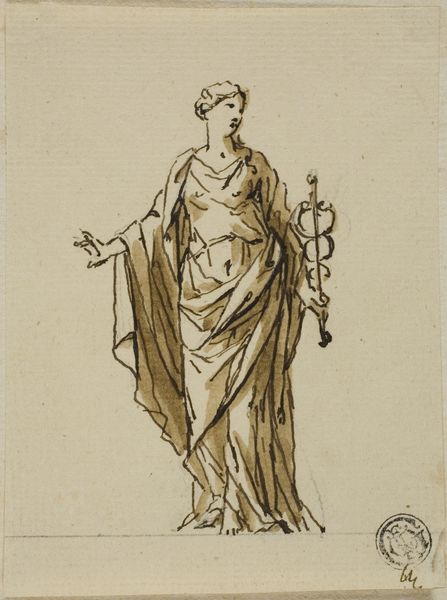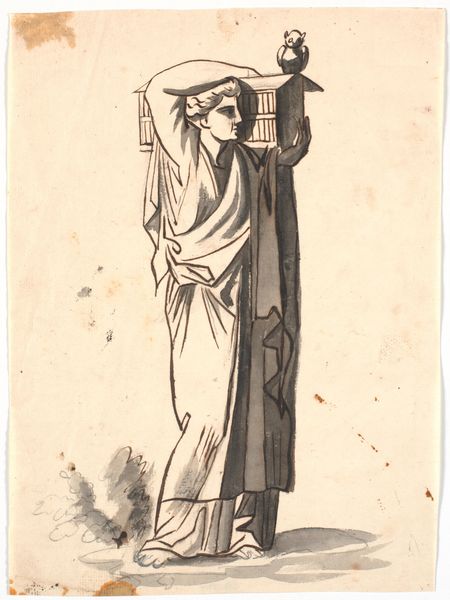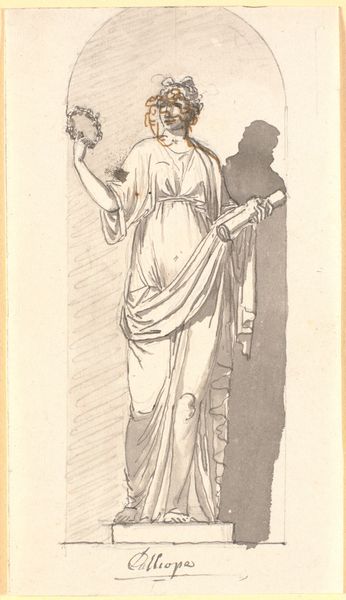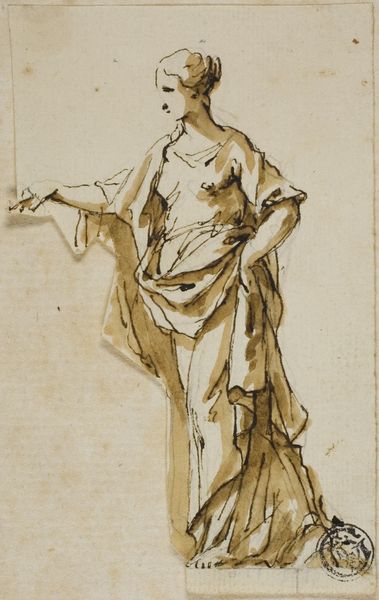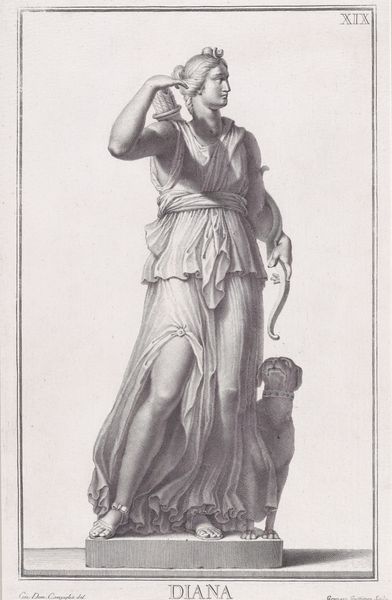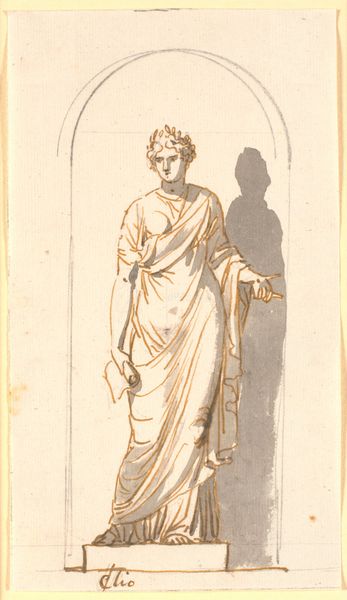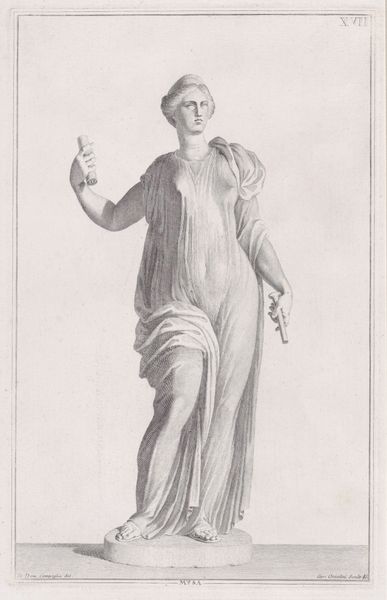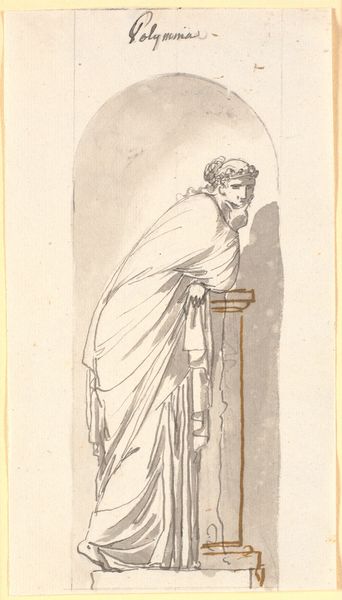
Erato, kærlighedsdigtningens muse, som statue i en niche 1743 - 1809
0:00
0:00
drawing, ink, pen
#
portrait
#
drawing
#
neoclacissism
#
figuration
#
ink
#
classicism
#
pen
#
history-painting
#
academic-art
Dimensions: 209 mm (height) x 128 mm (width) (bladmaal)
Editor: So, this is Nicolai Abildgaard’s "Erato, k\u00e6rlighedsdigtningens muse, som statue i en niche," a pen and ink drawing made sometime between 1743 and 1809. I find it striking how the artist depicted a sculpture, seemingly breathing life into stone. What's your take? Curator: Well, considering the period, we can see it through the lens of the Enlightenment's fascination with classical antiquity, right? But it's not just a revival of form. Abildgaard, living through revolutionary times, was likely drawn to the idealized virtue and civic responsibility associated with the Roman Republic. What do you make of the tambourine, almost floating to the side? Editor: It feels a bit disconnected, almost like an afterthought compared to Erato's serene figure. Curator: Perhaps, but consider its placement. Is it a purely decorative element, or could it signify the power of music and art to incite passion and even, potentially, social change? Think of how music functioned in revolutionary France! Abildgaard was no stranger to political turmoil. Do you think this image can relate to the shift in the perception of women within a revolutionary time frame? Editor: I hadn't considered that at all! Framing Erato in the context of both the Enlightenment and revolution certainly gives me a lot to think about. It suggests that art isn’t just about aesthetics, but a reflection of social upheavals. Curator: Precisely. And while it is Neoclassical, Abildgaard's decision to use drawing rather than sculpture might be telling of the accessibility that art could embody within such changing times. Editor: That's a really insightful interpretation! I now appreciate that this drawing is more than just a pretty depiction of a muse, but also a cultural artefact embedded within the context of revolutionary and social upheaval. Curator: Absolutely! Art acts as a mirror, reflecting not only what is, but also what could be.
Comments
No comments
Be the first to comment and join the conversation on the ultimate creative platform.

